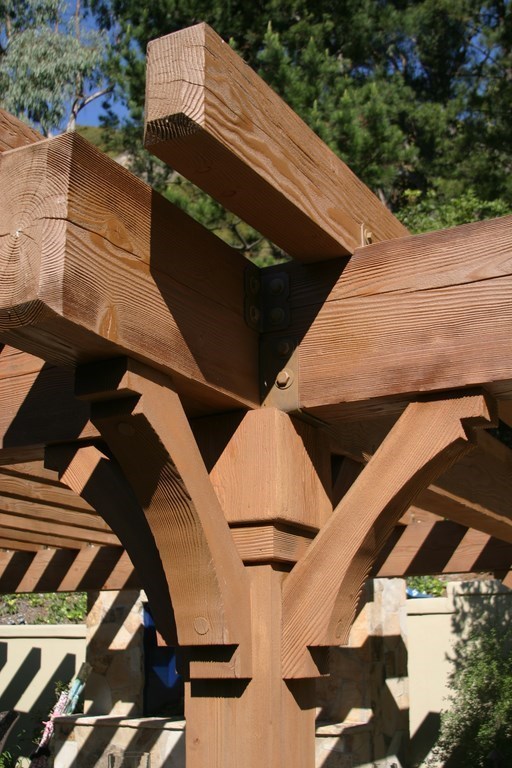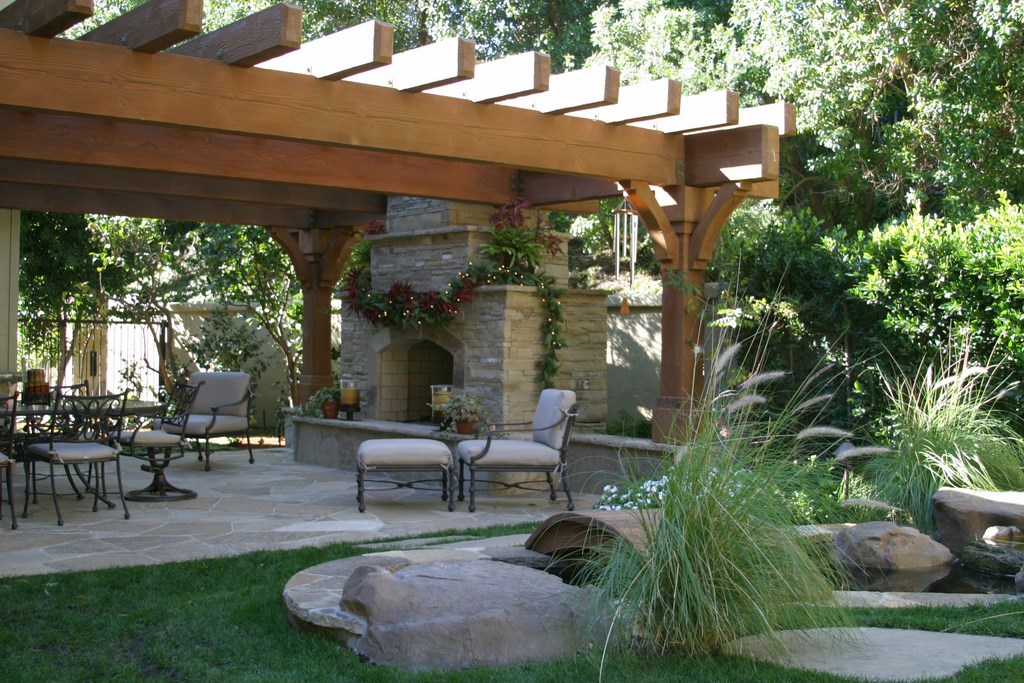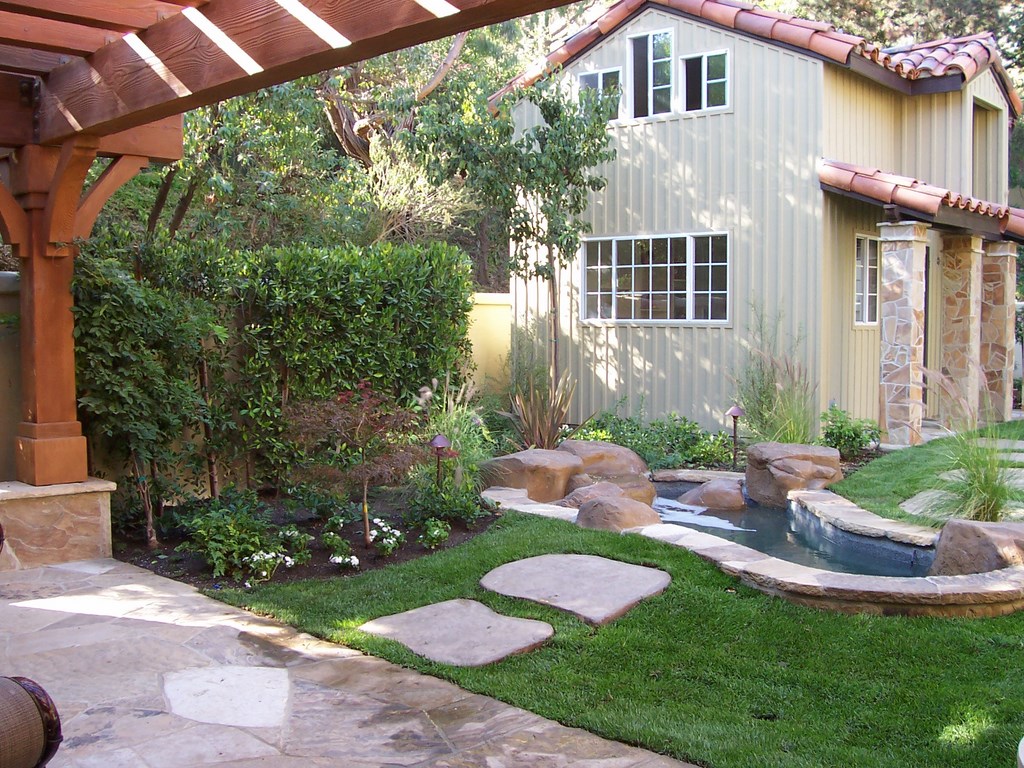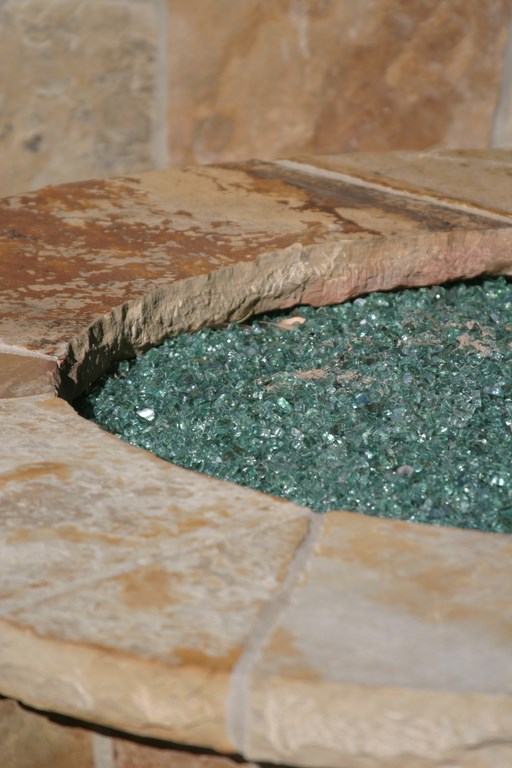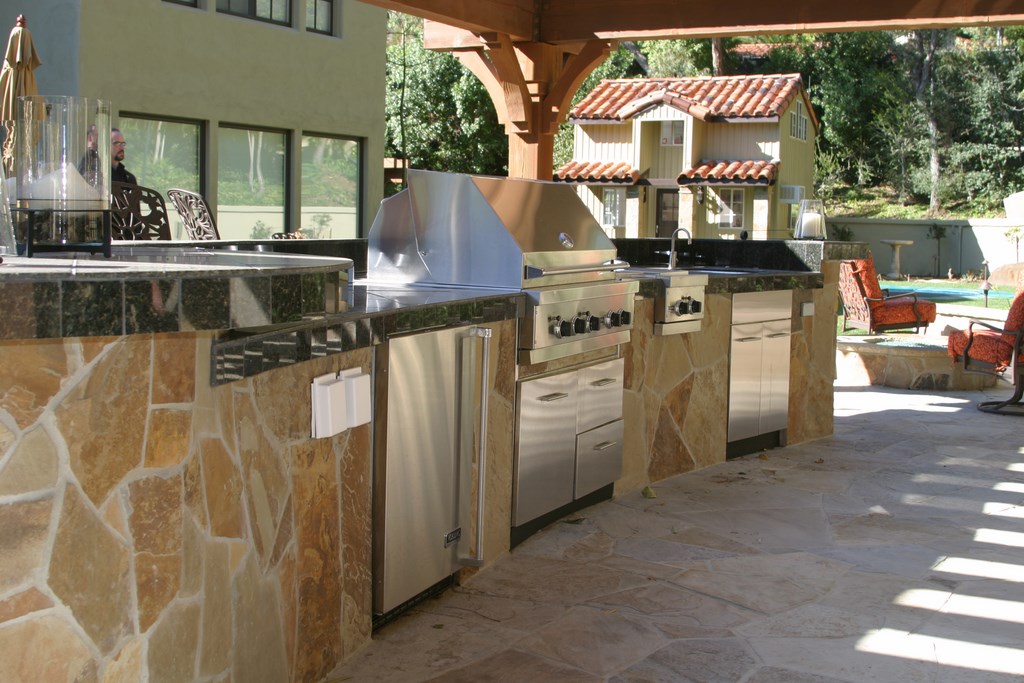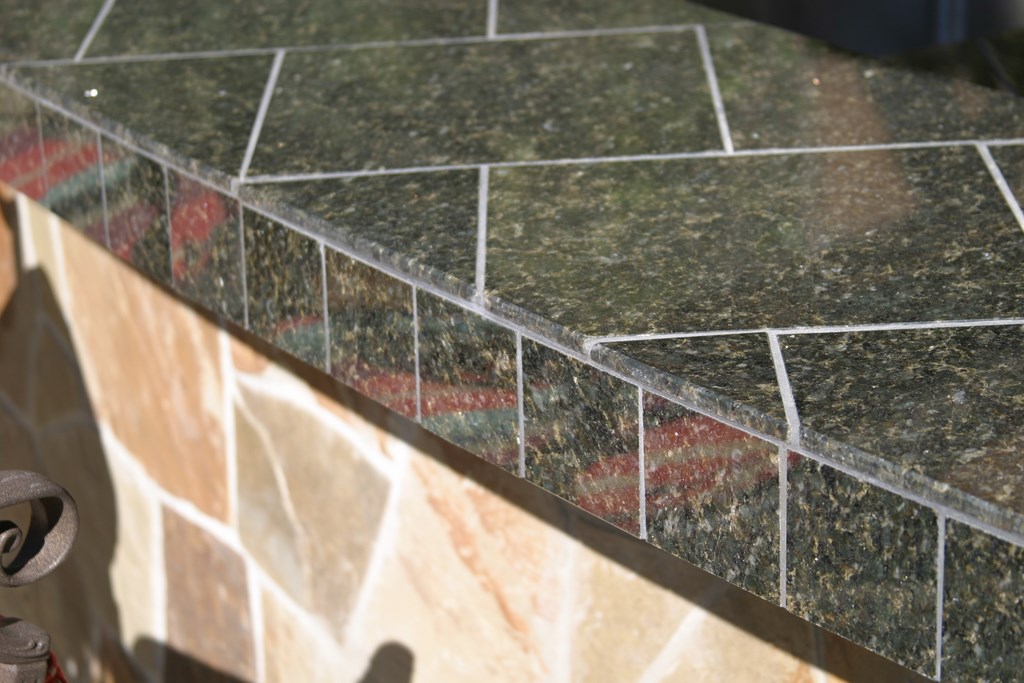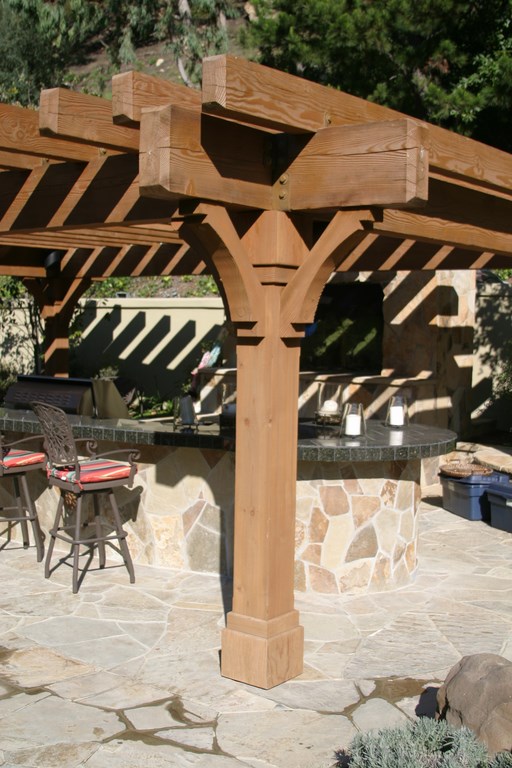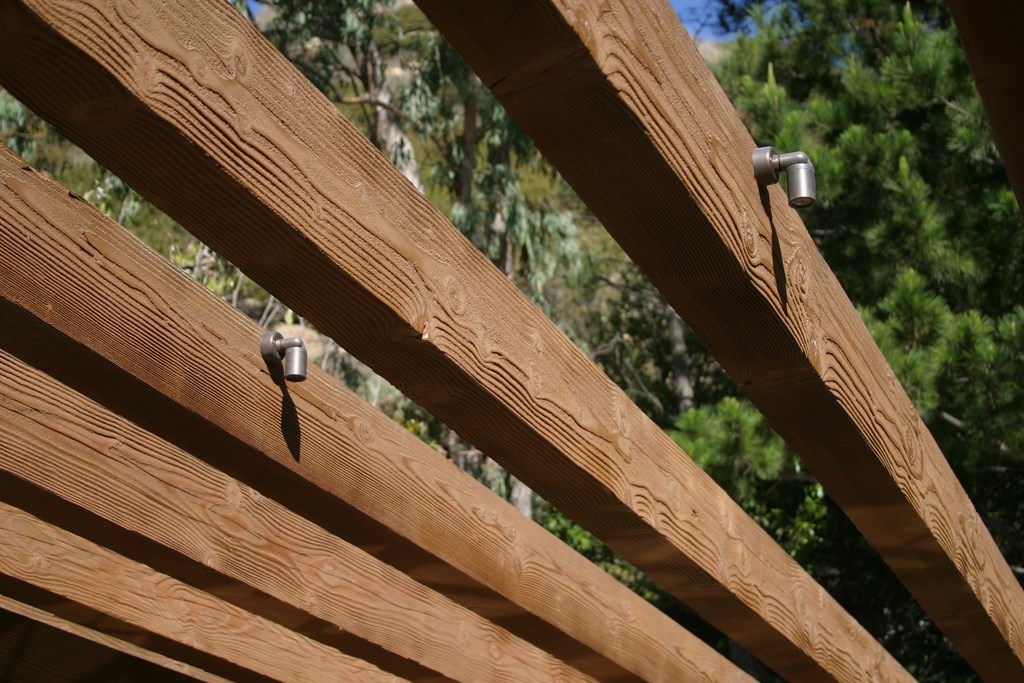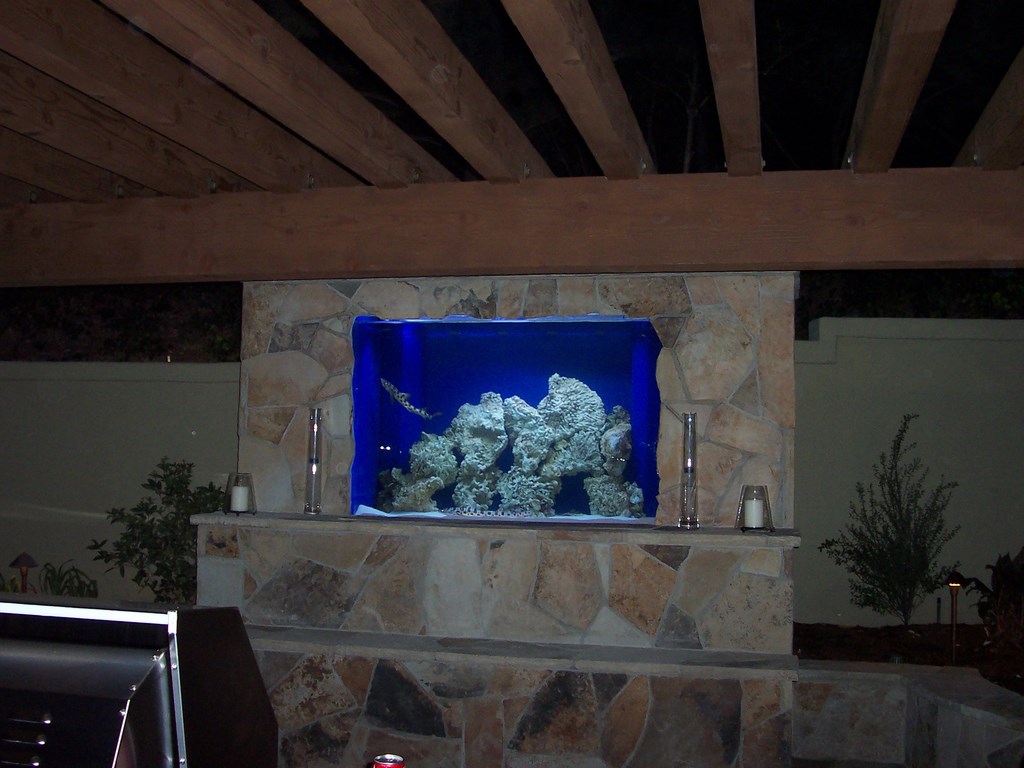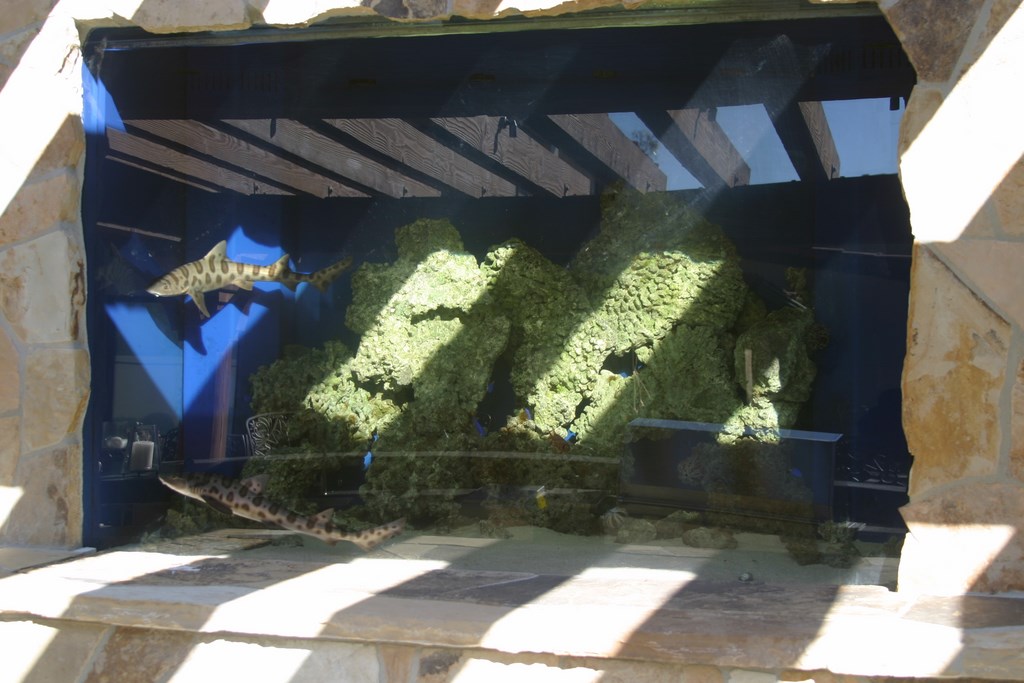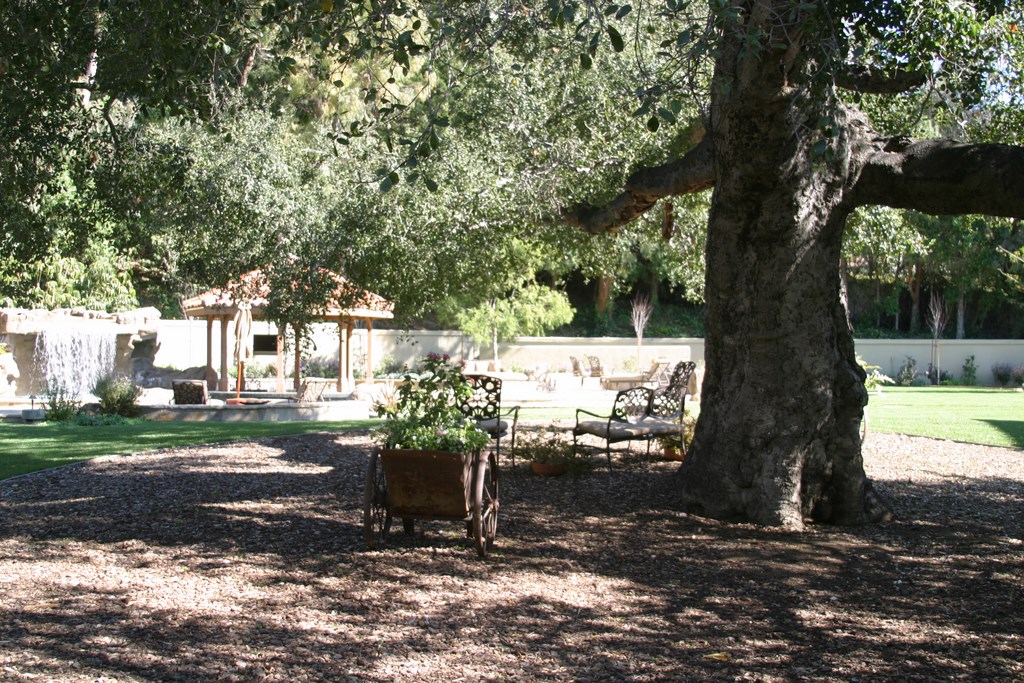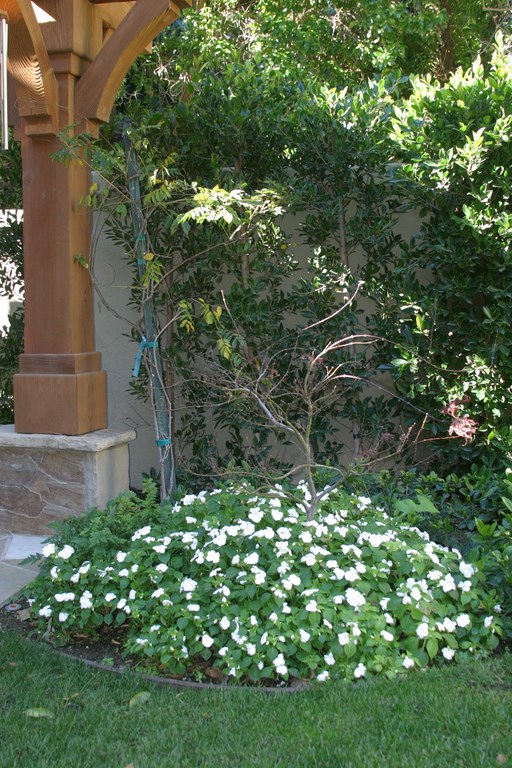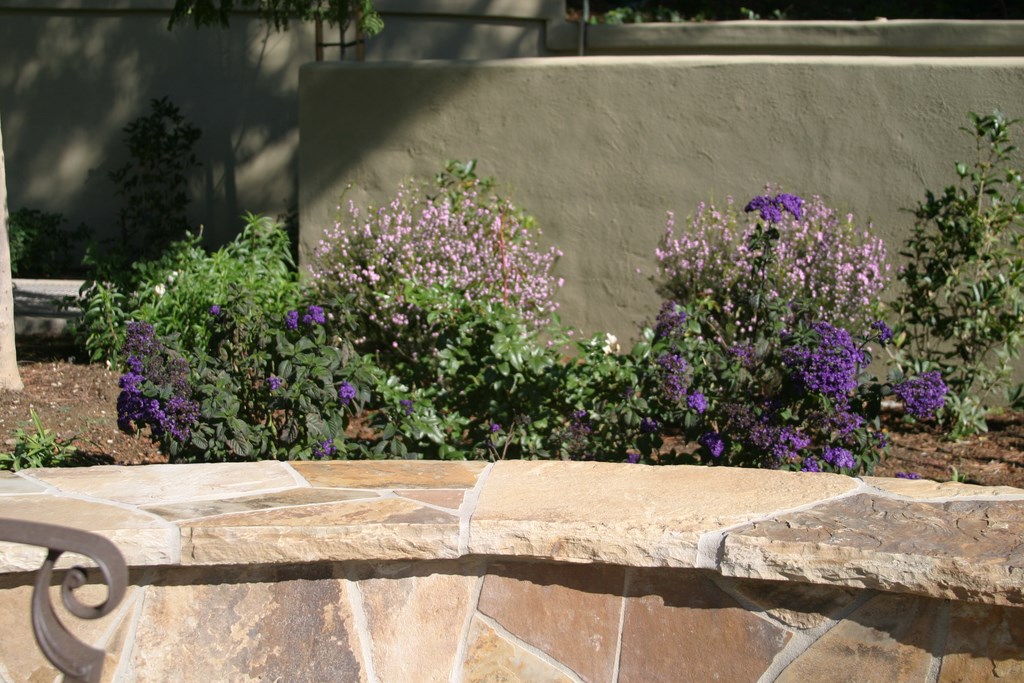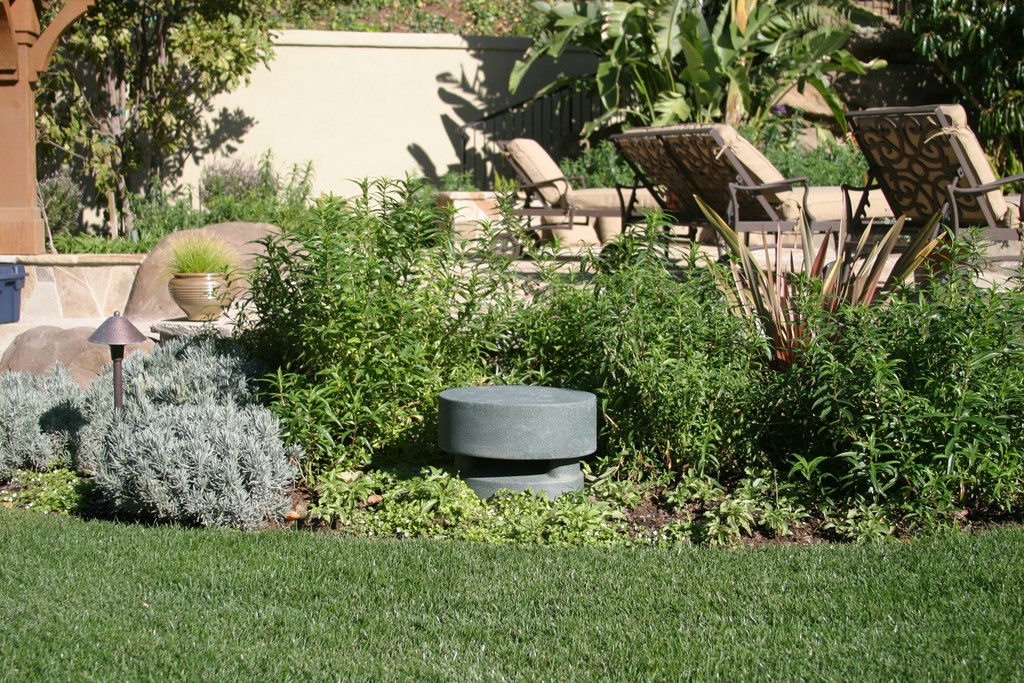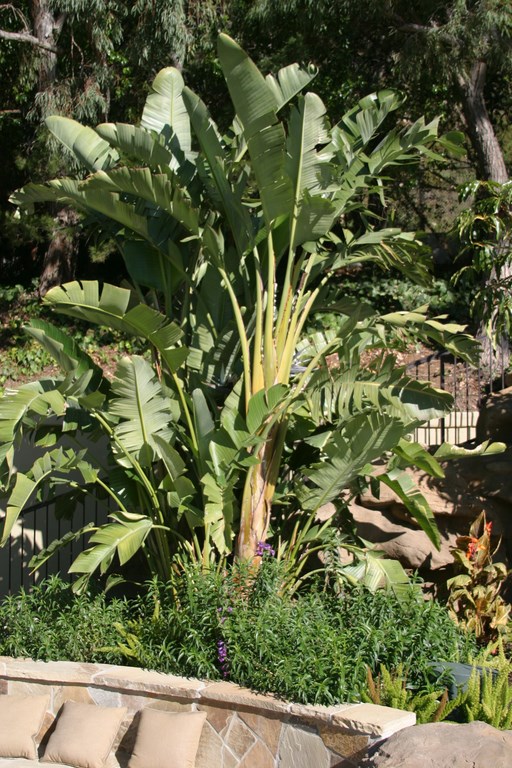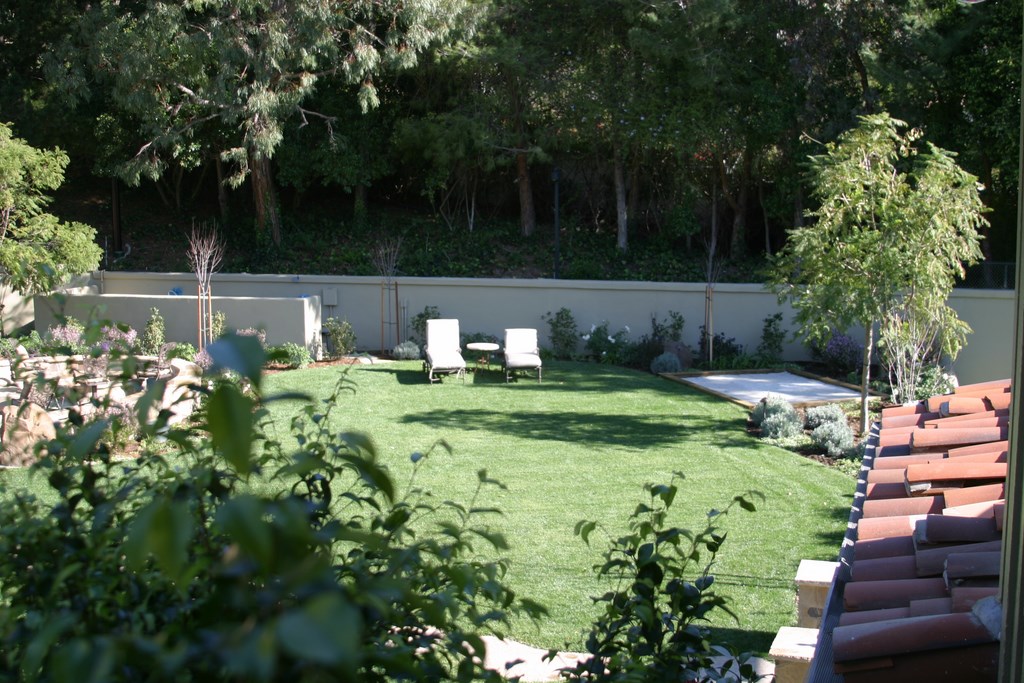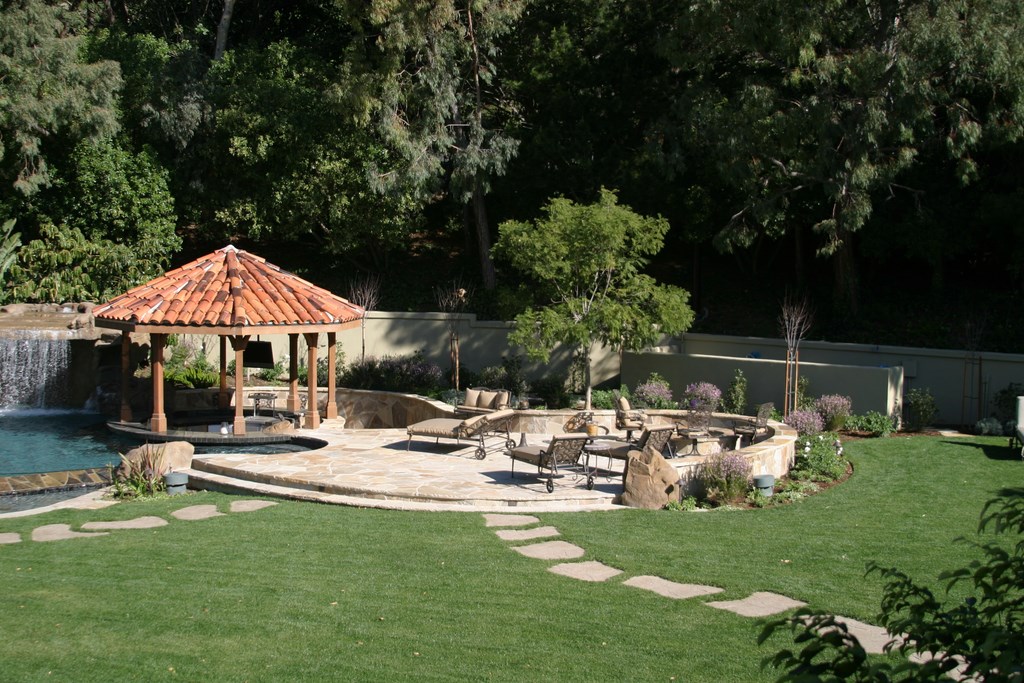In Due Time

Contractors of all types are notorious for setting impossible-to-keep schedules, thereby disappointing clients and damaging their own credibility in the process. Sometimes, however, situations arise that require landshapers to shrink their established installation timetables, a necessity that will turn up the heat on even the most accomplished of contractors.
For the project profiled in these pages, my clients had something come up that (from their perspective, anyway) necessitated completion of the project much earlier than anyone thought: They were expecting a baby and insisted that our delivery date should happen before theirs.
The challenge we faced with the new timetable – just five months rather than the planned eight – was huge: It required truly constant interaction and communication with the clients and sub-contractors as well as intensive coordinating and expediting of a mind-boggling number of simultaneous processes – enough to drive us all crazy from time to time, but ultimately a remarkably satisfying experience.
THE BIRTH OF AN IDEA
The story began in October 2004, when I received a phone call from a former client. In the time since I’d last heard from her, she’d married, purchased a new home in a secluded canyon in Malibu, Calif., and wanted my company, Prestige Landscapes of Porter Ranch, Calif., to run the entire renovation project, exterior and interior.
Sizing things up, we told her and her husband that the work would take a year to complete. Early in the construction phase, however, she became pregnant and informed us we would need to finish the job by September 1, 2005, as the baby was due mid-September and they wanted to be in the house and settled beforehand. It was already March by then – time to get a move on!
The 12,000-square-foot home had been built in 1990 and sits on 2-1/2 acres. Wrapped in brick and white stucco and surrounded by outdated, uninspired landscaping, nothing about it aligned with their aesthetic preferences. The yard’s brick decks, rectangular pool and tennis court consumed most of the available space, and the only shade structure enclosed an outdoor kitchen off to the side of the pool.
The design had clearly not been well considered and showed little regard for functionality or visual appeal. The plantings – mostly Ligustrum, Ficus and Agapanthus – revealed no real sense of balance, color or creativity.
| The home’s original ‘look’ was all about white stucco and masses of brick – not exactly suited to the setting and definitely out of alignment with the clients’ tastes and desire to establish warmer, more hospitable living spaces, indoors and out. |
What the clients had in mind was a revision that would soften the exterior and create a better flow through the space. The tennis court was expendable, they said, and they were quite specific in declaring their desire for a new, free-form pool with a grotto and slide. Beyond that, however, much was left to be determined – and everything was on the table.
Recognizing the full extent of the project, I set about building a team of skilled engineers, architects, designers, masons, carpenters and other tradespeople I knew would be required to supplement my capabilities and achieve my clients’ ambitions. Although a landscape contractor isn’t typically given this level of oversight, the trust I’d built with the homeowner on the previous project was paramount: She’d learned through that experience that I would not hesitate to bring in whoever might be needed to get things done.
We began by gutting the grounds, with the single exception of a majestic oak tree. We also stripped the house, removing all of the brick and replacing it with stone. Later, we accented the structure by wrapping the columns and some other details with Malibu Sunrise stone, a quartilitic sandstone. This material was supplied by Malibu Stone & Masonry, an operation located literally just down the street, which made selecting and getting stone delivered a breeze.
BREAKING GROUND
As a result of my recommendations and the game plan we developed, I found myself assuming the role of designer/contractor and was asked to develop two concepts for the backyard.
The pool was the key to both. The first featured a swim-up bar, grotto and slide, while the second had only a vanishing-edge detail that spanned the width of the pool. I offered perspective drawings to help them visualize the overall layout and the new balance between green and hardscape areas and we immediately settled on a hybrid of the two options.
Demolition began March 20, 2005. By that time, we were well aware of the deadline and of our need for speed. Where contractors usually wait for completed designs and then carry plans to the city for permits, we knew we had to get creative and develop an approach that would cut out nearly all of the waiting time.
| The compressed calendar made it essential to pursue the renovations on all front simultaneously. In some cases, this meant working before permits were approved and moving through project phases out of order as opportunities arose to get things done. |
This is what was now on the table: A vanishing-edge pool with a grotto and swim-up bar flanked by a gazebo, two patio structures, an outdoor kitchen and fireplace, a large lawn area, a sports court, two fire pits, a koi pond and, out front, a waterwall that would invite visitors to the backyard. They generally liked the front yard as it was and wanted to keep its natural look and mature Sycamores, but they also wanted to add Grasscrete pavers (Bomanite Corp., Palo Alto, Calif.) to support parking on the lawn area.
Getting rid of the yard’s old features took just three weeks, including soil compaction related to the old pool. We then proceeded to dig the new pool despite the fact we had yet to obtain the necessary permits: Waiting for approvals would have destroyed our timetable, so we adopted a slightly unconventional (and relatively risky) approach.
Basically, time was of the essence on all fronts, and I had to make the homeowners aware that completing the job on time would require unusual flexibility with the budget that would enable us to mobilize quickly and get work done with unusual rapidity. We informed them, for example, that if we were falling behind schedule on something like masonry, our solution would be to hire more masons or have crews work extended hours, either of which would mean extra costs.
As it turned out, however, these warnings weren’t necessary.
ON THE MOVE
As we began, I recognized that the only way to keep the budget in check and assure that the work would proceed at a fast-enough pace would be for me to take full responsibility for all the sub-contractors and function as a middleman between all of them and the clients. This meant I had to be there eight to 10 hours or more every day during the project: If there were any workers on site, I was there, too.
To manage the time constraints, we began by focusing on work that didn’t require permits and then worked our way toward the pool and other structures that did. Decks, for example, were built immediately after gunite elevations were set – that is, before the pool’s shell was shot. Normally, this is reversed and the shell and coping are in place with the decks fanning out from there.
The decision to take our chances that the grades would be correct and make any adjustments later posed some risk, but we knew what we would have to do if our calculations were off – that is, float a thicker mortar bed or chip out part of a sub-base – was something we could manage without losing too much time.
In this instance, working out of sequence did result in some problems when it came to matching the deck and coping grades: We were about an inch off, and we needed to reset a large area of decking stone to shift the elevation and accommodate proper drainage.
| The home’s new appearance is much more in keeping with its surroundings. Not only is it easier on the eye than the white stucco on brick, but it works beautifully with the colors of the sycamores, the hillside views and the rest of the open, park-like landscape we installed around it. |
We also ran irrigation lines as soon as we could and set up numerous sleeves for electrical conduit in keeping with the clients’ intentions: They planned on having considerable electronic equipment located throughout the yard that would enable them to watch television or listen to music in various places.
In the gazebo, for example, we suspended a television below the roof so it could be seen from the swim-up bar. There’s also a 60-inch plasma television that pops up in front of a shark tank (a late addition to the program). To cover all possible bases, we ran additional sleeves and conduits throughout the property as a contingency to accommodate future electronic, electrical or even whimsical needs.
Before long, the pool and patio-cover permits became available and we began building those structures. With the accelerated scheduling, however, we didn’t have the luxury of waiting until we had those permits in hand to purchase materials.
One sub-contractor, for example, purchased an entire shipment of lumber to make certain he could start the minute permits were secured. This included special-order beams that sat on site for weeks; if the city had decided we needed larger or smaller wooden beams, we couldn’t have returned them to the lumber yard with any hope of getting a refund.
TWISTS AND TURNS
Items added on throughout the process – and there were many – also required rapid, intricate planning and action.
Originally, for instance, we’d built a free-standing entertainment center with a large wall-mounted television, but one day the husband, a shark aficionado, mused that it might be fun to have a shark tank and then have the television pop up in front of it. The next day, we were jack-hammering out the structure that had housed the television and went about completely revising the area – and this happened with just three weeks left before the September 1 deadline!
The shark-tank episode called for rapid-fire work that is emblematic of all sorts of processes in which we were engaged. On the fly here as in many other cases, we had to redesign the existing structure to accommodate the size and weight of the big tank as well as the power requirements for the aquarium, the television and its lifting mechanism.
The new work began the very next day – before the shark tank had even been manufactured. The tank was set in place just two days in advance of the deadline and had to be installed from the front of the structure we’d built, meaning we couldn’t install the stone façade until the last minute.
Other late changes included adding six feet to the top of the water slide to wind it farther up the slope as well as placing significantly more stone in the overall design. The original concept called for stone on the deck surfaces only, but the clients liked the look so much that they requested that much more of it be included as accents on the exterior of the house.
| The most intimate space in the new backyard is tucked off to one side, where we placed an outdoor fireplace as the focal point under a shade structure. This is truly an extension of the interior space and offers access to a small koi pond as well as the scaled-down playhouse. (Note the appropriately smaller scale of the stonework columns: Selecting and installing all those smaller pieces was a bear given the deadline pressure.) |
In all, we purchased 8,000 square feet of Malibu Sunrise stone to cover many exterior surfaces, including the chimneys and columns. Getting enough material on site was a challenge, so we prepaid for all we’d need not only to do the work on the house but also for enough to cover the entire backyard well before we actually needed it.
Although these last-minute additions jeopardized our timing, the permit process was always the primary threat to our scheduling. Originally, we’d thought we were working within the City of Malibu but soon discovered that Los Angeles County held jurisdiction. My initial visit to the county office was a shock: I was informed that we didn’t need county permits to remove the old pool or tennis court, but that Coastal Commission approval was required to remove or add just about anything else.
I immediately visited the Coastal Commission’s office to file an exemption request for “all exterior landscaping elements and minor house modifications.” The ensuing three-week review process resulted in considerable confusion: They didn’t tell us if specific items were exempt; all they’d say is what things were “most likely” exempt and that everything depended upon our location.
UP AGAINST IT
Even though I was still confused, the letter I had gave me what I needed to attempt obtaining the necessary county permits. Each structure required one: the pool, the swim-up bar, the patio cover and so forth. Engineering submissions were similarly scattered, so we ended up repeating processes many times – a four-week proposition in each case.
I personally drove documents from Malibu to the Geotechnical Department, a division of the County Building Department responsible for soils and engineering – a roundtrip of about 80 miles. They had already reviewed the soils report and site when we originally submitted the pool permit, but that was before we knew our timetable would be significantly shortened.
Realizing my back was against the wall, I asked for the “Begging Department.” They thought that was funny enough that they summoned a supervisor. I pointed out that they had already given us the pool permit and that we couldn’t wait four weeks. Whatever I said, it worked: He promised a week-and-a-half turnaround, and we were on our way. When the next permit needed to be secured, they approved it in two weeks.
I knew going in that stopping what we were doing on site and waiting for the county would have blown our deadline to pieces. As it turned out, flashing a sense of humor about the whole thing obviously helped!
| The need to do detailed work while under the gun was particular felt in our work on the yard’s main gathering place and its surroundings. We knew the firepit, kitchen fixtures, countertop, shade structure, lighting and the shark tank would all come under tremendous visual scrutiny and didn’t compromise what we did in any way, even as time was running out. |
I drove multiple times to the Coastal Commission (another long road trip up the coast to Ventura, Calif.). Any structure requiring a permit falls under the commission’s jurisdiction, so to get a permit from the county for our patio cover, for example, we’d have to visit the Coastal Commission for further approval because our initial submissions there were only concepts lacking in critical height specifications.
Well before I had the permit maneuvering under control, I had already begun collaborating on the patio covers with Skip Frazee of Bruce Frazee Construction. The clients wanted a shade structure that didn’t draw attention away from the rest of the design, so we used plain (but big) 8-by-18 inch, by 32-foot long Douglas fir beams, each weighing 800 to 900 pounds.
Setting the beams required a Bobcat and backhoe, with two workers on ladders settling them into place on their posts. It was much more difficult to set the beams for the cover on the side of the house, because it involved a slope that made bringing in heavy equipment difficult.
NOTHING ORDINARY
Again working in the reverse of normal procedures, we put up the overhead structure after completing the deck below. Basically, we had no choice but to do so if we were to meet the deadline.
Anticipating final gazebo placement was particularly tricky. We had to fix general locations for the post holders and then dig out those spots from the gunite. We used a wagon-wheel mock-up to determine “good” locations for the anchors, but we knew that misaligning them even a fraction of an inch would prevent the octagonal structure from being framed properly. As a result, we located each post holder and allowed an inch or two of play before directing the pool’s steel contractor to frame the steel around them.
Not to harp on the deadlines, but the short timeline also forced us to look at getting plants in place with new attitudes and approaches.
The clients wanted a natural, soft design and that was about all they would say. To familiarize her with specific plants I wanted to use, we drove around the neighborhood to find examples that thrived in the area – often, I find, a more effective method for selecting plants than visiting a nursery. As we drove, she expressed a liking for a tropical look around the pool area only, so the design came to include coarser textures and large-leaf plants.
| The landscape plan radiates from the huge old oak tree that stands near the back of the house. The plants offer a feast of color, texture and heights, all arranged to distinguish areas in the yard, soften the edges of hardscape features and contrast (or complement) the huge expanses of lawn. |
For all that, the old oak tree was the anchor of the design and protecting it during construction was a priority. To that end, we mulched to the dripline with redwood bark, protected the trunk with fencing, preserved the grade under the canopy and directed all irrigation away from the dripline.
No other large trees were placed in the center of the yard, thus maintaining a free-flowing layout. Perimeter borders were used to soften the appearance of the retaining walls and to encircle the entire garden. The open lawn spaces we preserved in this way served as a balance to the pool area, while some larger plants enabled us to control traffic in such a way that the pool, swim-up bar and grotto are viewed from the house with a certain element of discovery.
Trees and perimeter shrubs were planted on site whenever they became available – another odd gesture to the deadline monster. Miraculously, we completed a month’s worth of planting in only two weeks, although accomplishing this feat required expanding the crew and working seven days a week during our last month on site.
THE HOME STRETCH
It seemed that no matter how hard things were or what methods we had to use to accomplished our tasks, the clients were always agreeable, accommodating and had few preconceived notions about how things should work: They simply trusted us to get the job done.
In fact, they are without question the most accommodating people for whom I have ever worked, and it’s certain that without such a level of cooperation we simply couldn’t have achieved the goal. They understood what was required to such an extent that the husband was there every morning to listen and offer his input – and, of course, to announce loudly and in good humor exactly how many days we had left.
Many last-minute ideas needed to be incorporated quickly.
The grotto, for example, was already under construction when the husband mentioned that his wife liked crystals and that he thought it’d be great to imbed some in the grotto walls along with fiberoptic lighting and a fog system. That evening, I searched the Internet, found a supply of Brazilian crystals, had them shipped to the site overnight and began installing them the next day.
| The basic program for all the spaces we established in the sprawling yard fit in with the clients’ desire for energetic, year-round family recreation, but the overall impression is relaxed, even serene – perfectly in step with both the clients’ personalities and the nature of southern California’s easygoing, outdoor lifestyle. |
These types of changes, of course, made mincemeat of my attempts to plan things out clearly. We couldn’t have anticipated, for example, the need for a 220-volt power service for a shark tank that came out of the blue. Fortunately, we had provided for such contingencies by including extra sleeves and conduits running underground in every which way. In the case of the shark tank, this measure paid off big time.
Another afterthought had to do with modifying an existing playhouse – basically a 1/5-scale version of the main house – that originally had brick columns and a fiberglass/artificial-tile roof. We detailed the structure and replaced the old roof with a new one to match the main house, maintaining the 1/5 scale with all design elements to make the structure blended with the rest of the setting.
Then there was the pop-up television, another late addition. It sits inside a solid-copper housing that seals at the top to prevent moisture penetration to the television – a big issue so close to the coast. The equipment was state-of-the-art but not specifically designed for outdoor conditions, so we had to do our best and alert the homeowners that the life expectancy of the television was likely to be shorter than they might anticipate.
IN DUE TIME
Just as important were the design details we knew would pile up during the last days before the deadline. Proper planning in conjunction with the interior decorators was key to securing appropriately styled landscape lighting and outdoor furniture, none of which could be placed until the last minute.
|
Thanks All Around As mentioned in the accompanying story, this project would not have been possible without the critical contributions of a number of key players. Chief among them were Randy Bauer (Symphony Pools, Chatsworth, Calif.); Kevin Lowe of Waterfeatures Unlimited (Valencia, Calif.), who took care of masonry and artificial rockwork; Phil Moinester of The Aquarium Center (Tarzana, Calif.); Bob Kliedman of SPJ Lighting (South El Monte, Calif.); Lance Lentz of LDL Contractors (Thousand Oaks, Calif.); and Anthony DeVaughn of Concepts in Technology (Hollywood, Calif.). — P.K. |
We chose antique-bronze fixtures from SPJ Lighting (South El Monte, Calif.) that provide natural, soft lighting and could be controlled from inside the house. Good outdoor lighting is critical in a place such as this: Situated in a canyon well away from city lights, there’s no urban glare and it gets very dark at night. For all that, the homeowners like to use candles and the fireplaces, so they wanted us to set up the lighting with a subtle touch.
For the furniture, I worked with the decorators early in the process to ensure our layouts would accommodate the desired tables, chairs, couches and other furnishings. Early communications led us to increase the amount of hardscape to allow greater space for relaxation and entertainment.
Ultimately, though the project budget increased 50 percent between our start date and completion on September 1, 2005, our working schedule didn’t increase by even a single day. Through careful coordination, some risk taking, a great deal of hard work on the part of many people and the careful nurturing of strong relationships with my sub-contractors, we were able to satisfy the clients’ desires and ultimately set my company up for the best possible sort of referrals in the future.
Of course, there’s also the fact that these particular clients are a bit restless and have informed me that they will be keeping me busy with future properties they plan to purchase!
Pat Kirk runs Prestige Landscapes of Porter Ranch, Calif. A landscape contractor for the past 22 years, he focuses primarily on high-end exterior environments in southern California in which he has collaborated with general contractors, watershapers, specialty trades and various other construction professionals. His primary business is construction-oriented, but the nature of his clientele requires significant design expertise and the ability to coordinate, secure and manage high-quality workmanship in an extremely demanding market.










